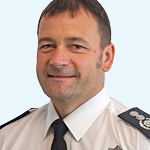
Gavin Tomlinson is chief fire officer at Derbyshire FRS, and chair of the protection and business safety committee at the NFCC
The case for multiple staircases in new high-rise buildings
In the past three years, there have been 154 fires in London where more than 10 people evacuated a high-rise block of flats. It is time to start mandating second staircases, writes Gavin Tomlinson
Across England, many people live in high-rise blocks of flats with only one staircase. In the event of a fire, if residents are evacuated, they have to share this single staircase with firefighters gaining access.
Firefighting crews will be carrying firefighting equipment, as well as potentially assisting older, disabled and vulnerable people to safely evacuate the building.
Despite this, there is currently no maximum height for residential buildings with only one staircase in England.
It is essential that everyone, in all buildings, can evacuate during a fire.
Evacuation may not always be necessary, as it is often safe for residents to ‘stay put’ unless they are affected by fire, heat or smoke.
Nevertheless, the original concept of stay put allowed for people to evacuate a building if they wanted to. Yet, buildings are being designed on the assumption that only the occupants of the flat in which the fire started will try to leave.
Data from the fire and rescue service incident recording system on mass evacuations with a stay put policy in place shows that this assumption is wrong.
In the three years from 1 April 2019 to 31 March 2022, the London Fire Brigade reported 154 cases where 10 or more people evacuated from a block of flats of at least six storeys.
Nearly 8,500 residents chose to evacuate these buildings rather than stay put either before, during or after the fire and rescue service arrived.
“A second staircase, if designed correctly, removes the possibility of a single point of failure”
This is why the National Fire Chiefs Council is calling on the government to introduce a requirement for all new residential buildings taller than 18 metres, or seven storeys, to have more than one protected staircase.
In existing residential buildings of this height with a single staircase, it should be a requirement to retrofit sprinklers. This was a recommendation from the coroner at the Lakanal House Inquest.
Any lifts in tall residential buildings should be installed or replaced so that they too are suitable for use in an evacuation.
When built and maintained properly, tall buildings with single staircases are not inherently unsafe, but having multiple staircases and evacuation lifts will increase the safety of residents and firefighters.
Such measures buy critical time for firefighting activities while ensuring people evacuating have multiple escape routes, and, crucially, a back-up should one route be inaccessible due to smoke or fire.
Essentially, a second staircase, if designed correctly, removes the possibility of a single point of failure.
England is an international outlier on this, with countries such as the United States, Canada and Australia all having height limits. Even within the UK there is inconsistency, as buildings taller than 18 metres in Scotland are required to have multiple staircases.
“A building is only as safe as its management. Its design, construction and fabric are underpinned by assumptions on how the building will be used and managed”
It has now been over five years since the tragic events of the Grenfell Tower fire, in which 72 people lost their lives and a further 74 were injured. The government has made strides to ensure that the combustible cladding that exacerbated the fire is removed from all other high-rise residential buildings.
However, Grenfell exposed the historical and systemic flaws in our built environment that extend beyond cladding. We should not simply look at defects, but towards holistic improvements to fire safety arrangements. Reform in these areas, however, lags dangerously behind.
A building is only as safe as its management. Its design, construction and fabric are underpinned by assumptions on how the building will be used and managed.
This, in turn, underpins the approvals, information requests, and safety advice given during construction and build. We have called on the government to establish statutory procedural guidance that places a duty on building control bodies to respond to, and demonstrate how they have addressed, comments made by fire and rescue services.
These recommendations could be reinforced by amending building regulations or the government guidance, Approved Document B (ADB).
The government should be congratulated on the improvements it has made, such as requiring sprinklers in new buildings that are 11 metres tall.
Publishing an updated ADB review work plan would give regulators, the public and the fire safety industry confidence that the government is committed to further reform.
This is an opportunity to improve our built environment, benefitting thousands of people across England, safeguarding lives and reassuring people they are safe in their own homes.
Gavin Tomlinson, chief fire officer, Derbyshire Fire & Rescue Service, and chair, protection and business safety committee, National Fire Chiefs Council
Sign up for our fire safety newsletter
Already have an account? Click here to manage your newsletters




